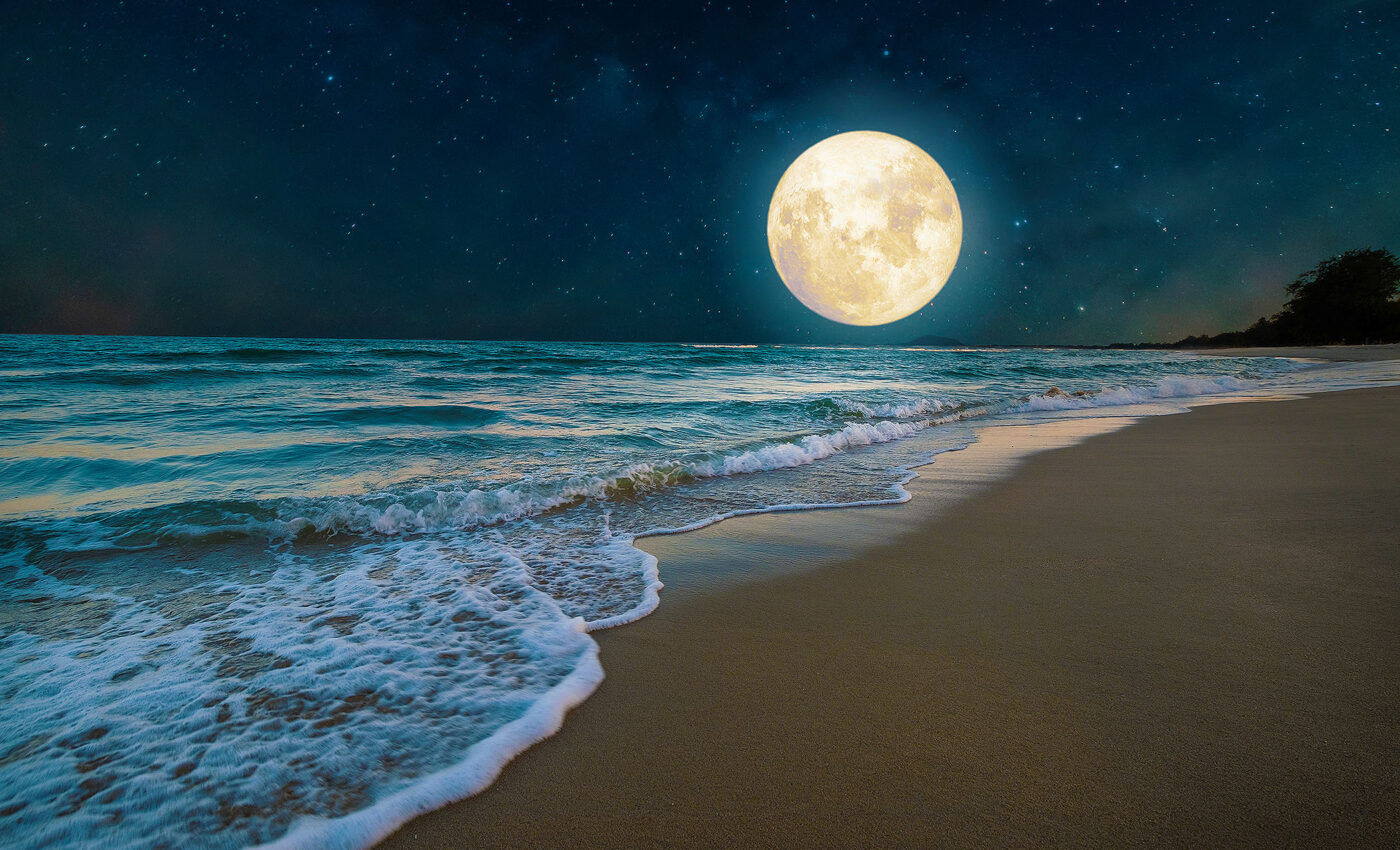
Tonight's Buck Moon will be the first of four ultra-bright supermoons
As the summer twilight fades this evening, the Super Buck Moon will illuminate the sky. While the moon may appear to be full for up to three days, it will reach its absolute peak on Monday, July 3 at 7:39 a.m. EDT.
Nearly a hundred years ago, the Maine Farmer’s Almanac began referring to this particular moon as the “Buck Moon.” They attributed this moniker to the Algonquin peoples of the northeastern United States.
According to NASA, each full moon has a myriad of names, many of which different cultures and traditions have passed down over centuries.
“Early summer is normally when the new antlers of buck deer push out of their foreheads in coatings of velvety fur,” says NASA. Another name for this lunar phenomenon is the Thunder Moon. This is due to the frequency of thunderstorms that occur in early summer.
July’s full moon also bears different names across various regions and cultures. Parts of Europe know it as the Hay Moon, reflecting the traditional haymaking season.
Others refer to it as the Mead Moon. Hindu, Buddhist, and Jain cultures honor it as the “Guru” Full Moon (or “Guru Purnima”), a time to pay respect to spiritual or academic gurus.
What is a “supermoon”?
A careful observer of the night sky will notice that the moon not only goes through its phases but also seems to vary in size throughout the month. This phenomenon arises from the elliptical path that the moon follows as it orbits the Earth.
At times, the moon swings closer to our planet, reaching its nearest point or “perigee.” Other times, it ventures further away, reaching the farthest point or “apogee.”
Each full noon we witness throughout the year is at a slightly different distance from Earth. This is due to its elliptical orbit.
As a result, some full moons appear smaller and dimmer, while others look larger and brighter in the sky. The most luminous full moons are called supermoons.
Astrologer Richard Nolle coined the term “supermoon” in 1979. He described it as “a new or full moon which occurs with the Moon at or near (within 90% of) its closest approach to Earth in a given orbit (perigee).”
Depending on the celestial mechanics of the year, we may see anywhere from two to five supermoons. In 2023, there will be four supermoons on July 3, August 1, August 31, and September 29.
Brightness of the Super Buck Moon
Without a side-by-side comparison, it’s quite challenging to discern the size of any specific full moon relative to normal. However, the brightness of the moon is often more noticeable.
Retired NASA scientist Fred Espenak anticipates that the Super Buck Moon will shine roughly 25 percent brighter than this year’s February apogee full moon, which is the farthest, smallest, and dimmest Full Moon of the year.
This makes it nearly 13 percent brighter than an average full moon, such as those we witnessed back in April or May.
The concept of the “moon Illusion” also plays into our perception of the lunar size. The illusion, which refers to the moon appearing larger when it’s near the horizon compared to when it’s high in the sky, has been a subject of discussion among scientists and observers alike.
Even though we know the moon’s size remains constant, the visual distortion created by this illusion can make comparisons challenging. However, this doesn’t hinder our appreciation of the moon’s enhanced brightness during a supermoon.
Full Moon superstitions
Full moons have been a source of fascination and wonder for millennia, leading to a number of superstitions and beliefs. While there’s no scientific evidence to support these superstitions, they are still quite intriguing.
Increased lunacy during a full moon
The term “lunacy” comes from the Latin word for Moon (“luna”). There’s a longstanding belief that a full moon can trigger erratic and outrageous behavior in people. This belief is so ingrained that even today, some people think they are busier in emergency rooms and police stations during a full moon.
Werewolves and shape-shifting
The most famous full moon myth might be the legend of the werewolf. The legend goes that some humans transform into a wolf during a Full Moon. This concept is popular in folklore and pop culture, but thankfully, there’s no evidence of werewolves existing in real life.
Sleep disruption caused by full moon
Some people believe that a full moon can interfere with sleep. While this might be partially true for light-sensitive sleepers who have their blinds open, scientific studies generally haven’t found a substantial connection between sleep quality and lunar phases.
Increased fertility
In many cultures, the Moon is associated with femininity and fertility. Some myths suggest that a Full Moon can enhance a woman’s fertility. While this is a beautiful concept, there’s no scientific data to support it.
Good luck
In some cultures, people believe that if you make a wish at the time of a full moon, it will be granted. Other superstitions suggest that the full moon is an optimal time for rituals, spells, and other magical practices.
—-
Check us out on EarthSnap, a free app brought to you by Eric Ralls and Earth.com.













